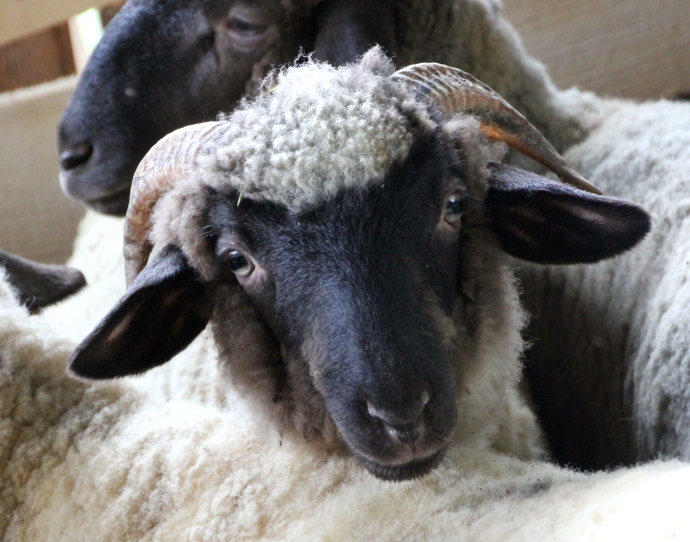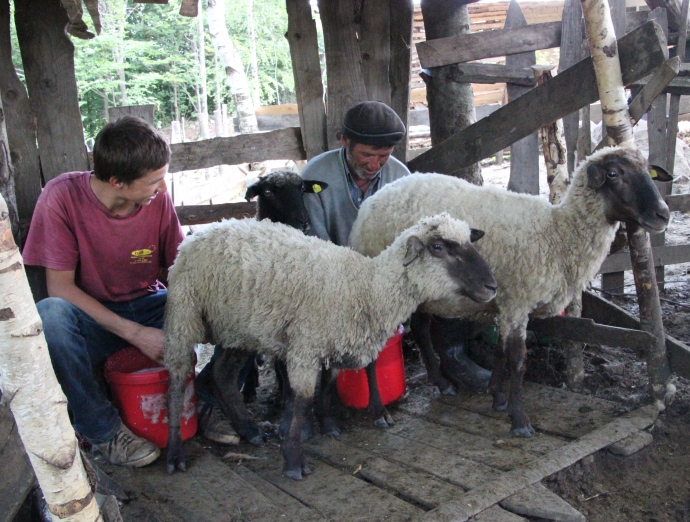 Doreen Jankowski didn’t start out to be a local food impresario. 18 years ago, she and her husband Pete moved from Massachusetts to Florida, then back up to her granddaddy’s land in Appalachia (making them “halfbacks” in the local parlance) where she started a big garden on her two acres.
Doreen Jankowski didn’t start out to be a local food impresario. 18 years ago, she and her husband Pete moved from Massachusetts to Florida, then back up to her granddaddy’s land in Appalachia (making them “halfbacks” in the local parlance) where she started a big garden on her two acres.  Pete was always complaining that he couldn’t find any hot sauce he liked, so Doreen started fooling around with applewood-smoked recipes packed with serranos and habanero peppers. She produced such good hot sauce, her friends started asking her for bottles of it, then their friends started asking for it, then Early Girl restaurant in Asheville fell in love with it, and Doreen figured she might have a business on her hands.
Pete was always complaining that he couldn’t find any hot sauce he liked, so Doreen started fooling around with applewood-smoked recipes packed with serranos and habanero peppers. She produced such good hot sauce, her friends started asking her for bottles of it, then their friends started asking for it, then Early Girl restaurant in Asheville fell in love with it, and Doreen figured she might have a business on her hands.
Now Fire from the Mountain is selling from between 500 to 2,000 bottles of hot sauce and salsa a month, and Doreen is up to her elbows in habaneros and cash.
Carol & Lon Coulter got lured into local food production a bit differently. 18 years ago they fell in love with a big piece of land in Watauga County that was covered in prickly multiflora roses. Naturally, they bought 3 goats that love to eat those pesky bushes (accidentally, one turned out to be male), and before you could say reproduction, Lon & Carol had baby goats on their hands. So they started making goat ice cream, then goat yogurt, then goat cheese–and that turned out to be so damn good, they created a whole line of Heritage Homestead products. Today, they’re selling 150 pounds of gorgeous chevre, camenbert, blue and gouda cheeses a week –not to mention some phenomenally delicious dark chocolate goat cheese fudge.
 Charles Church, one of the most influential farmers in the five-county area, began organic farming after the tobacco farm subsidies flamed out in 2004. He saw the potential for organic produce: “…where for the first time I could grow whatever I wanted, name my price, and get it.” He began to grow all kinds of vegetables on his farm and started a cooperative called East Coast Organics, and last year, that group made $2.75 million in gorgeous organic sales. Despite the difficulties of farming – and as Charles can tell you, farming is a 100-hour a week, physically tough, demanding job that will teach you something new every day – Church and his wife Betty are skilled and successful; and as a true Farmer of Farmers, he spends hours reaching out to all the farmers around him to help them succeed, too.
Charles Church, one of the most influential farmers in the five-county area, began organic farming after the tobacco farm subsidies flamed out in 2004. He saw the potential for organic produce: “…where for the first time I could grow whatever I wanted, name my price, and get it.” He began to grow all kinds of vegetables on his farm and started a cooperative called East Coast Organics, and last year, that group made $2.75 million in gorgeous organic sales. Despite the difficulties of farming – and as Charles can tell you, farming is a 100-hour a week, physically tough, demanding job that will teach you something new every day – Church and his wife Betty are skilled and successful; and as a true Farmer of Farmers, he spends hours reaching out to all the farmers around him to help them succeed, too.
It’s these kind of folks that Heifer is investing in – and hoping to replicate – in its Seeds of Change initiative, concentrating on the agricultural part of producing local food as well as the enterprise side, helping local entrepreneurs with business plans and loans, production, marketing and distribution.
It starts with people like Doreen, Charles and Carol and continues with young kids in the Future Farmers of America at Johnson County High School who are raising 25,000 tilapia in their school science lab — and envisioning a future when they can make a living on their land. The local food movement in Appalachia is a beauty to behold (and eat!) but to Jeffrey Scott of Heifer, it also has the potential to save the health and jump-start the economy of this traditional farming area.






































